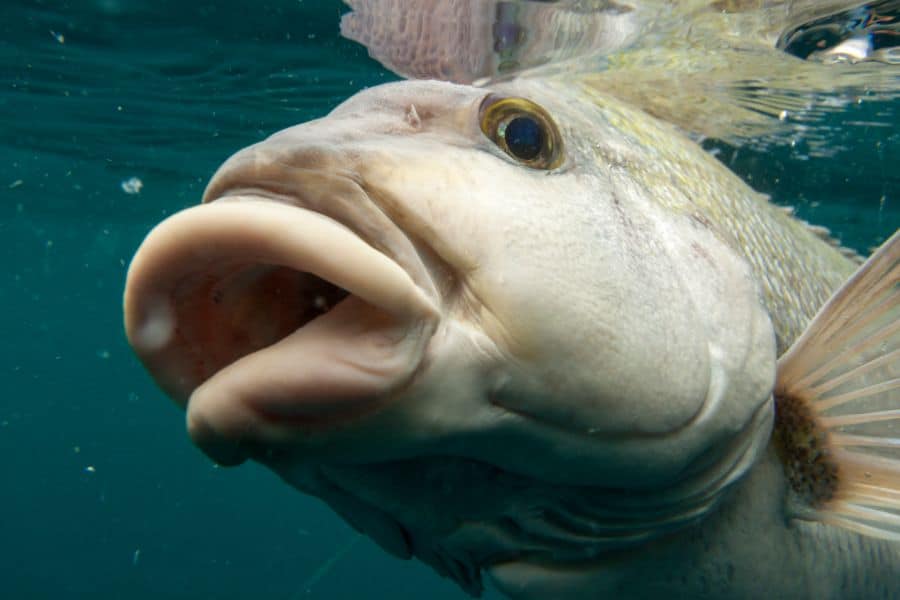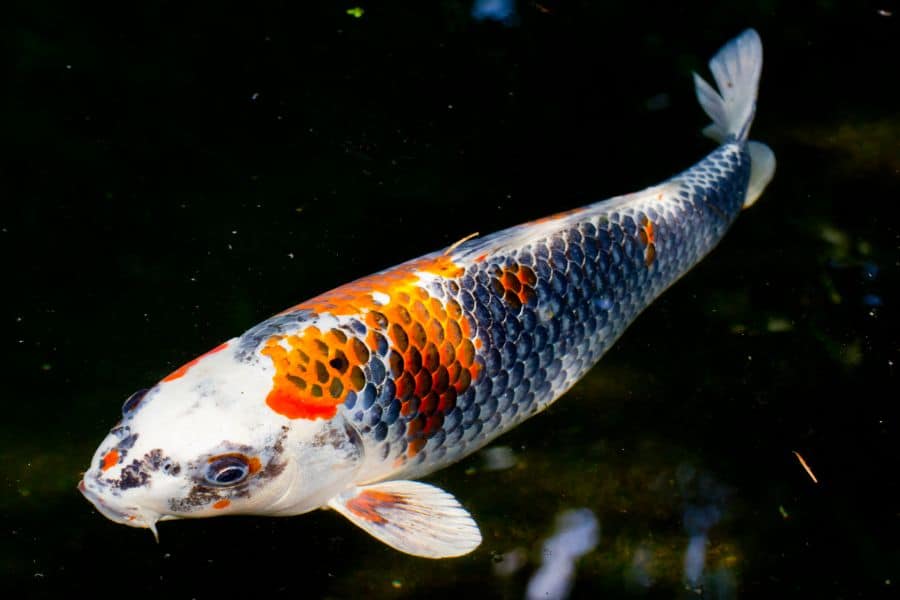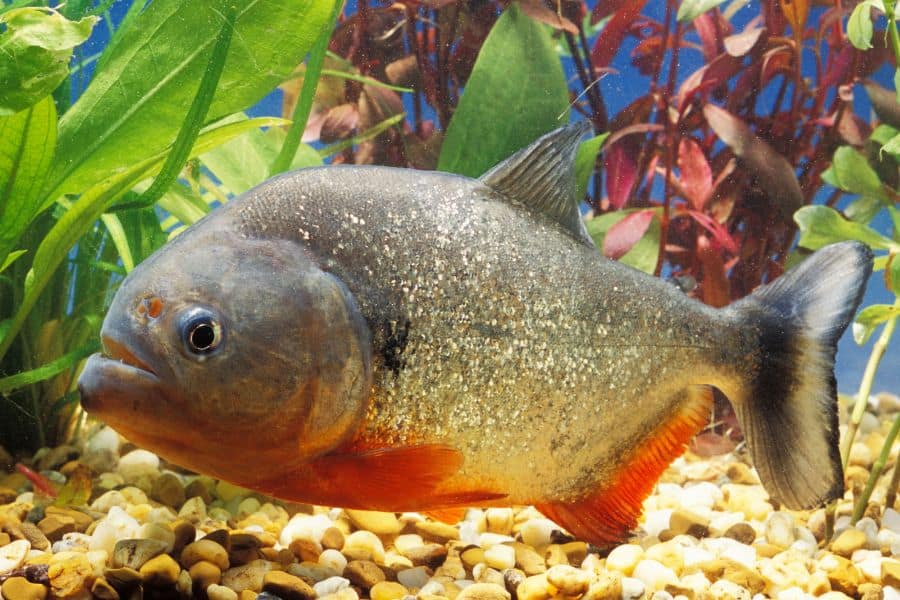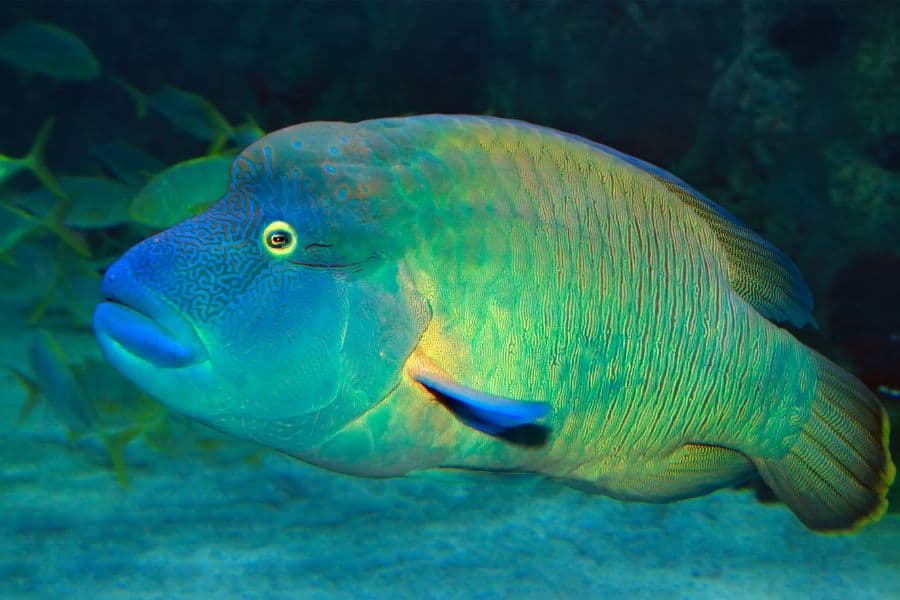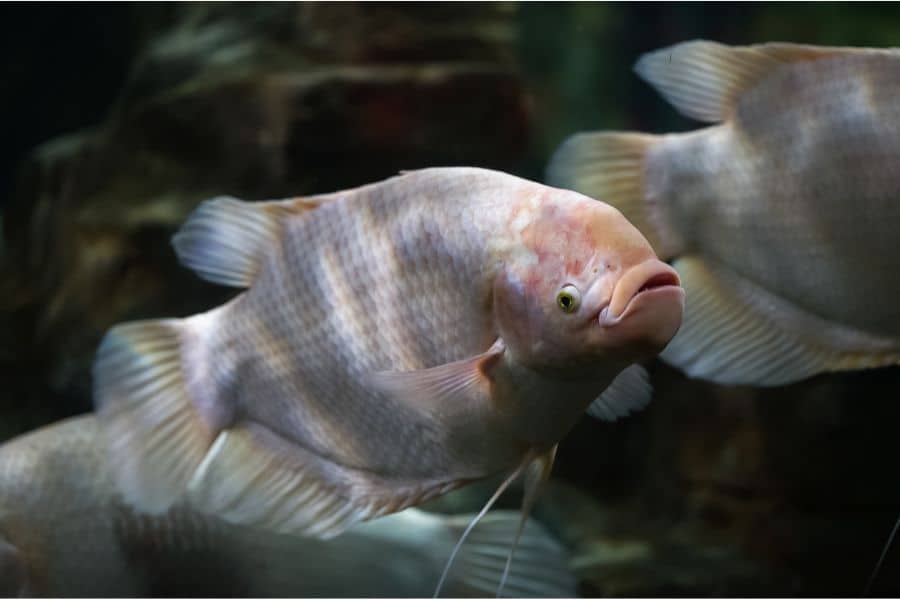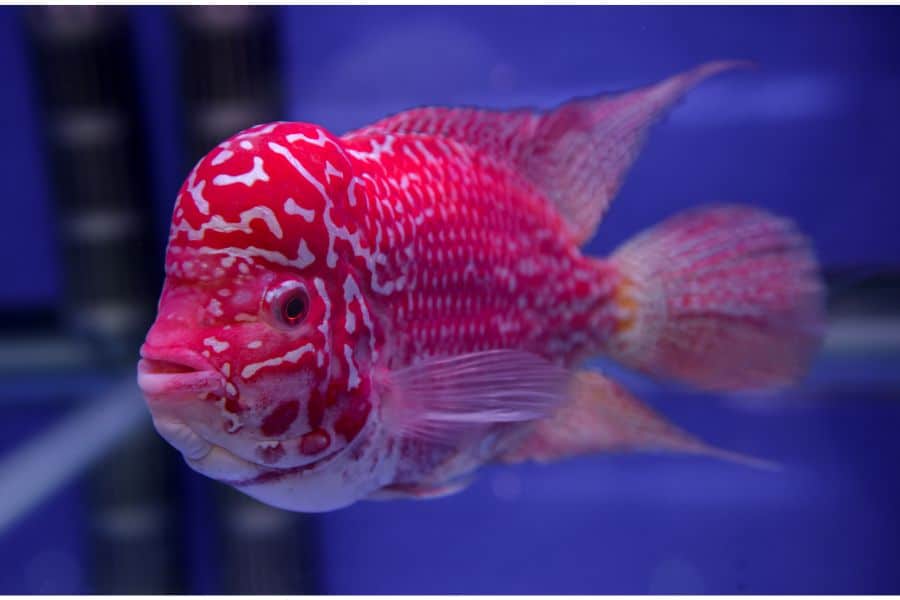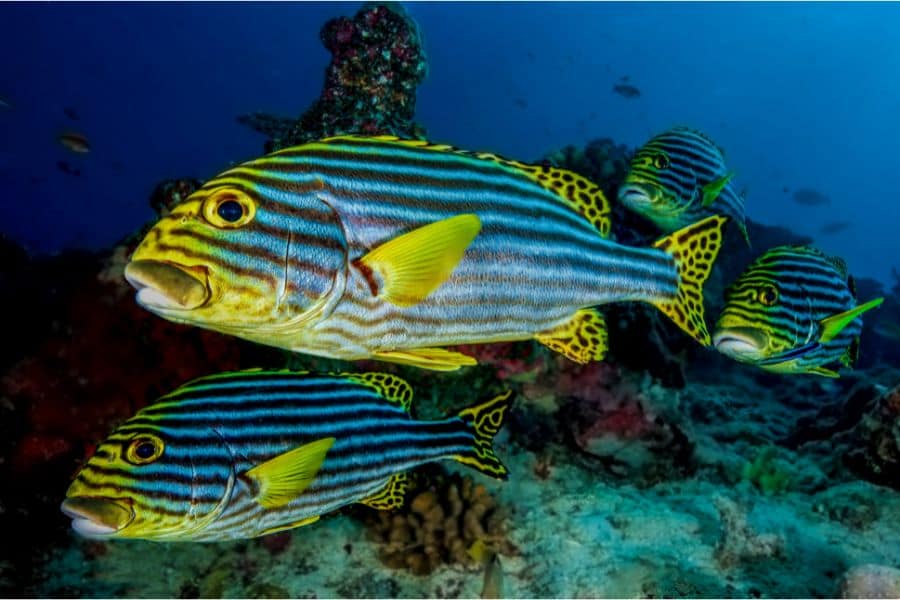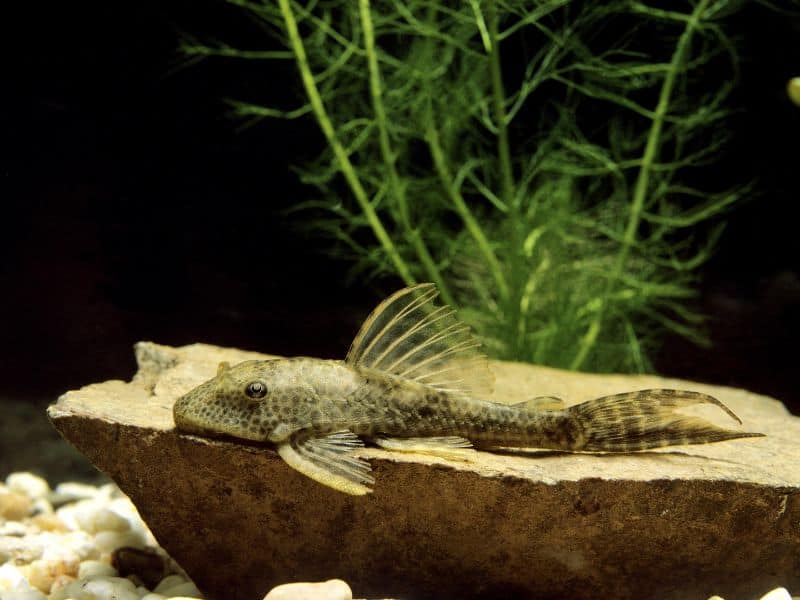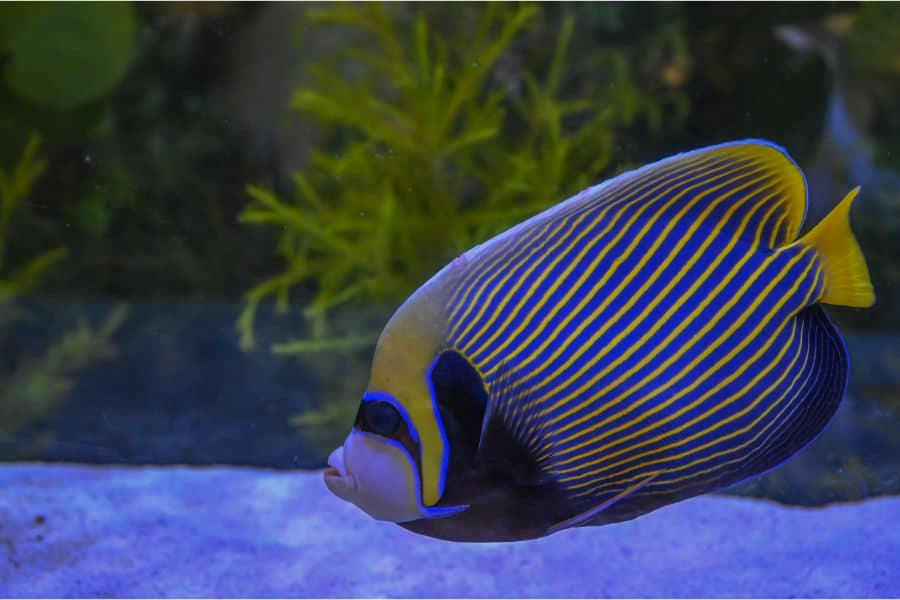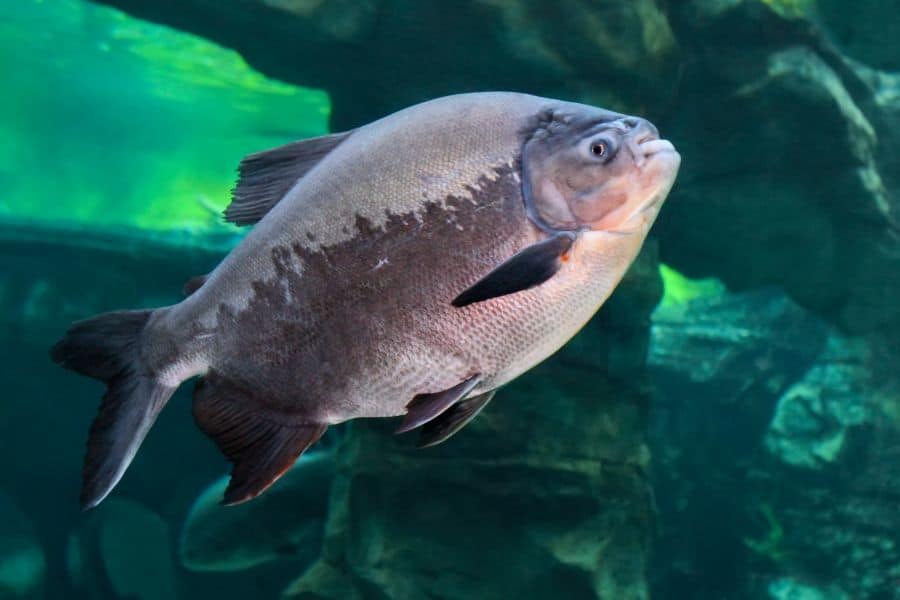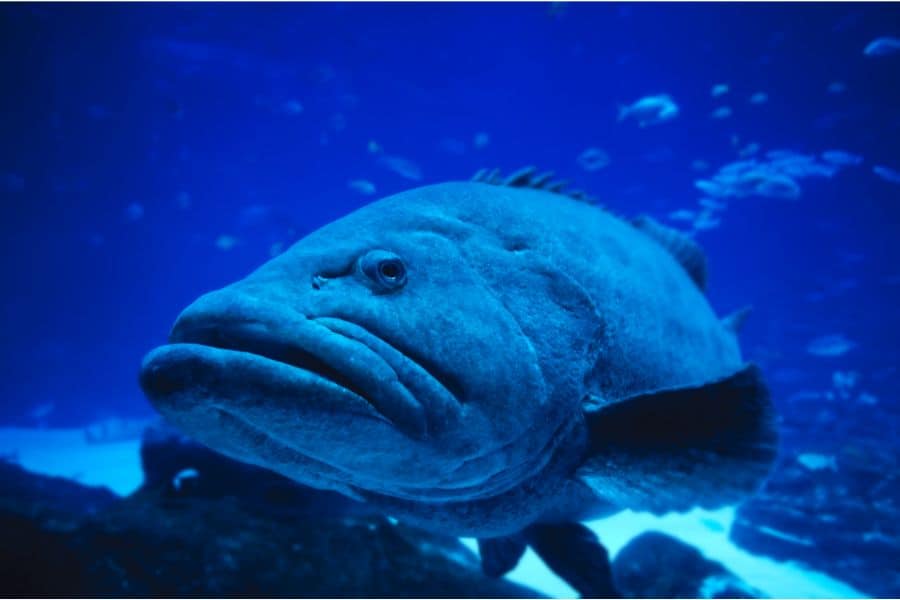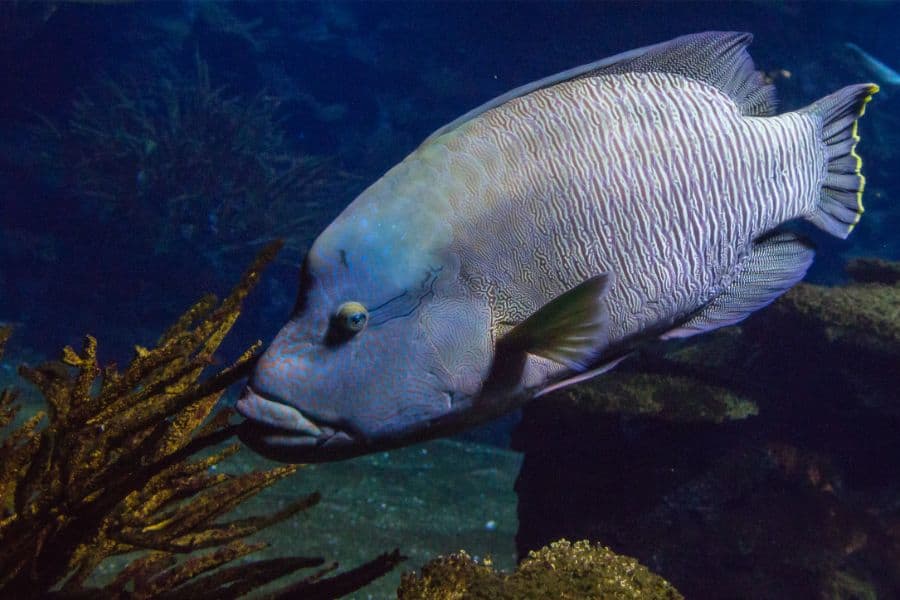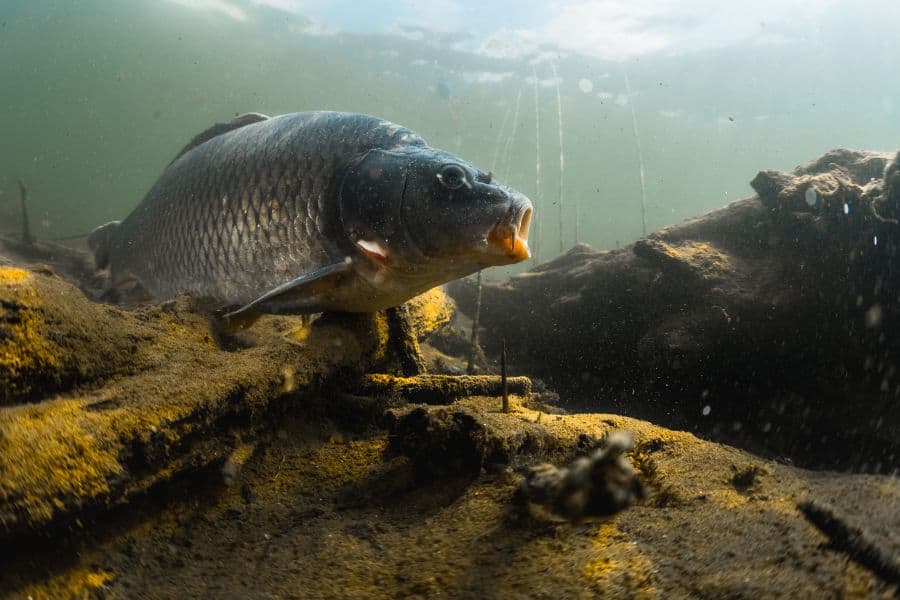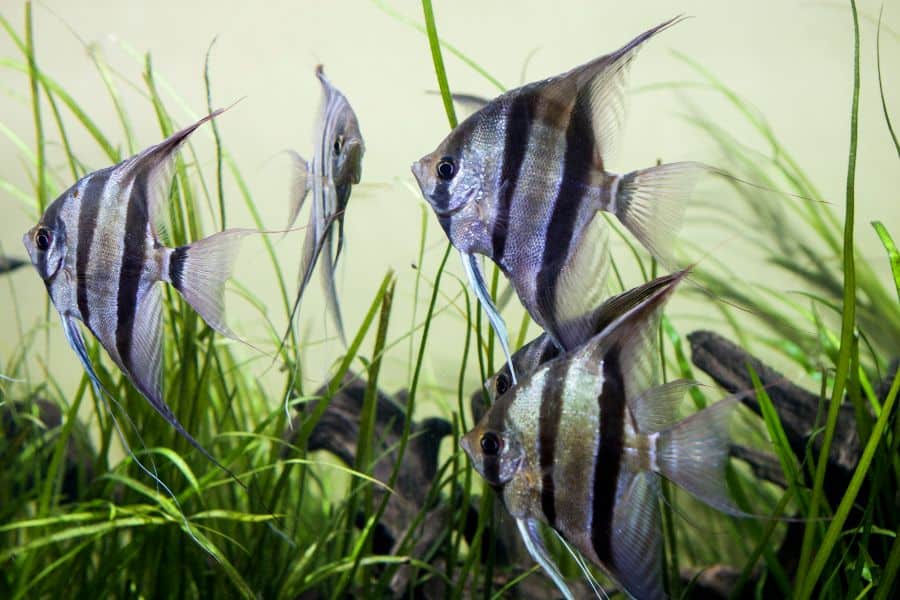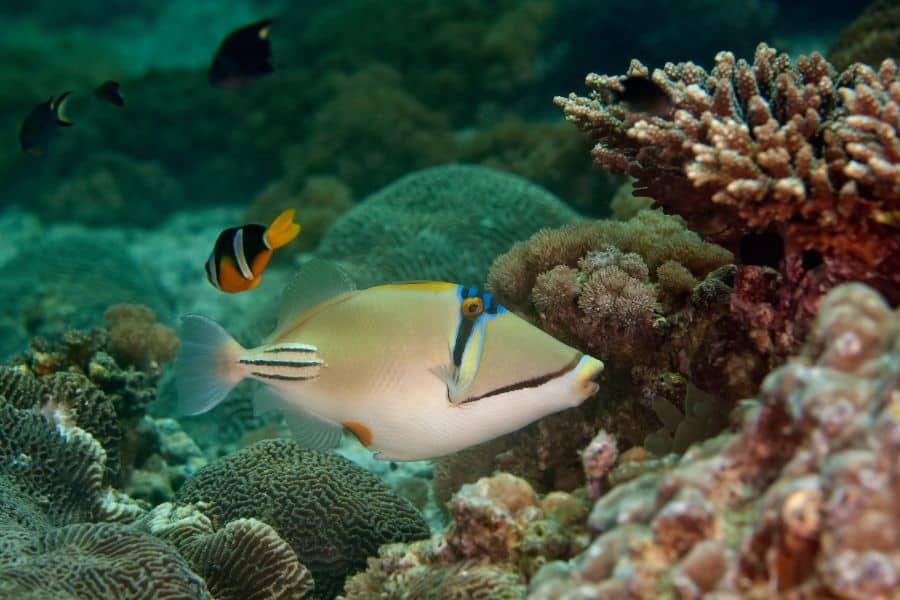Many types of fish have large lips, but some species have gigantic mouths in relation to their size.
This facial feature normally has a purpose, such as to scrape algae off surfaces or to house sharp teeth for hunting, but some fish simply have big lips for no reason!
Whether you want to add a large-mouthed fish to your tank or can’t remember the name of a big-lipped fish you saw at a public aquarium, below are some of the most popular fish with big lips to help you narrow down your options.
Fish With Big Lips
1. Koi
One of the most well-known fish with big lips is koi, a subspecies of common carp. Many owners of this fish will tell you that they love to beg for food, normally by opening and closing their wide mouths whenever you walk past them!
Koi are native to East Asia, but they can also be found in other places, including North America, Australia, and Europe. This freshwater fish comes in a vast assortment of colors and patterns, which is one of the main reasons why they are so popular among aquarists.
They can grow extremely large, normally between 2 to 4 feet long, but some specimens can exceed 6 feet. Due to their size, koi thrive best in spacious outdoor ponds that are at least 1,000 gallons in volume.
These fish live a very long time – it’s not uncommon for them to reach 40 years of age, so they’re a pretty big commitment if you decide to keep them!
2. Piranha
Another fish that has big lips is the piranha, which is a member of the Serrasalmidae family. This freshwater fish is native to rivers of South America, including the Amazon River.
Piranhas are commonly depicted as aggressive, dangerous fish that will attack anything they come into contact with using their spiky teeth. However, most species of piranha pose no threat to humans (other fish are a different story, though!).
The two most common types of piranha are the black piranha and red-bellied piranha, both of which can grow to a whopping 18 inches in size and 8 pounds in weight.
As you’ve probably already guessed based on their intimidating appearance and teeth, piranhas are primarily carnivorous. Their powerful jaws and sharp teeth allow them to easily strip the flesh of their prey.
Piranhas normally hunt in small groups in the wild – they feast on small fish and mammals, as well as insects and the occasional fruit/vegetable. There have also been reports of this fish attacking large animals, including cows and humans, though cases of these are rare.
3. Napoleon Fish
Native to the Indo-Pacific region, the Napoleon fish is a species of ray-finned fish that is a deep blue color with a large forehead and wide mouth. They are also sometimes called Maori wrasse or Napoleon wrasse.
Napoleon fish can grow up to two feet in length and are voracious predators in the wild. They can eat up to 30% of their body weight in just one day and will feed on small fish, mollusks, and crustaceans.
This fish is also popularly consumed by humans as they are supposedly quite tasty! Many fisheries in the Indo-Pacific region raise Napoleon fish as a food source.
4. Gourami
Two of the characteristic features of gourami fish are their big upturned mouths (they kind of look like they’re frowning) and labyrinth organs that allow them to breathe oxygen from the air.
They’re native to Southeast Asia where they occupy marshes, swamps, lakes, and streams. There are many types of gourami, from the very small like the sparkling gourami to the very large like the elephant ear gourami.
The kissing gourami in particular has pouty toothed lips that are used to graze algae and detritus off hard surfaces, as well as to fight for territory with other males (this process looks like “kissing”, hence the name!).
As omnivores, gourami eat a mixture of meaty food and plant matter like zooplankton, algae, insects, and crustaceans. In captivity, they’ll readily accept freeze-dried, frozen, and live fish foods.
5. Flowerhorn Cichlid
Flowerhorn cichlids get their name from the large protruding bump on their foreheads, though they also have fairly big lips. These stunning fish don’t occur naturally in the wild – the only one that do have been released by aquarists or breeders.
Unfortunately, this has resulted in them becoming an invasive species in certain parts of the world, particularly in Singapore and Malaysia where they were first bred.
Flowerhorn cichlids are available in an array of colors and patterns, including red, purple, orange, pink, blue, gray, and yellow. They are large fish that can grow up to 16 inches in length, so they require at least a 75-gallon tank.
This freshwater fish is omnivorous and has a huge appetite – they should be fed high-protein foods like shrimp, bloodworms, mosquito larvae, and high-quality fish pellets (ideally soaked in a bit of tank water first to prevent digestive issues).
6. Sweetlips Fish
The most notable feature of the sweetlips fish is its large fleshy mouth that becomes more swollen with age. These fish use their big lips to suck up food from the ocean floor.
Sweetlips fish are closely related to groupers and inhabit coral reefs in the Indo-Pacific, though their striking appearance also makes them a popular fish to own in marine aquariums.
There are many varieties of this fish, all of which have different colors, growth rates, and patterns. However, some of the most common ones include the painted sweetlips, harlequin sweetlips, striped sweetlips, and ribboned sweetlips.
Sweetlips fish are omnivores that primarily eat mollusks, invertebrates, crustaceans, and algae in the wild. Captive-raised specimens can be given high-quality fish flakes and live or frozen food like shrimp, clams, and pieces of squid.
7. Common Pleco
The common pleco, also known as the suckermouth catfish, belongs to the armored catfish family and is native to the tropical waters of South America. There are also many other types of aquairum catfish on the market.
Their large sucker-shaped mouths allow them to rasp on hard surfaces such as rocks and driftwood to pick up algae.
Common plecos are a deep brown, gray, olive, or black color with dark markings. They can grow to lengths of up to 24 inches, though they are much smaller as juveniles.
The common pleco is an omnivore that can be offered both plant-based and meaty foods like algae wafers, fresh algae, blanched vegetables (zucchini and cucumber are great options), fish flakes/pellets, and live or frozen foods.
8. Marine Angelfish
With their vivid colors and big protruding lips, marine angelfish are a staple in any saltwater tank.
They’re native to the Atlantic, Pacific, and Indian Ocean where they are found in shallow coral reefs. Large species of this fish normally grow to around 8 to 12 inches in length, but those kept in captivity tend to be a little smaller.
Small species like the dwarf marine angelfish normally only reach around 5 inches in length.
Diet for this fish varies based on the species – smaller types usually feed on plankton, while larger varieties typically eat tunicates (invertebrates like sea squirts), bryozoans (creatures that inhabit seaweed and rocks), sponges, and hydroids (creatures similar to jellyfish).
9. Pacu
Despite being closely related to piranhas, pacu fish are the complete opposite in temperament and dietary requirements – they’re actually vegetarians!
Pacu fish look a lot like piranhas, though they have square teeth (not unlike humans) and an overbite rather than sharp teeth and an underbite like their distant cousins.
They originate from both tropical and subtropical South America in lakes, rivers, flooded forests, and floodplains.
Pacu are usually a solid gray, black, silver, or white shade and can reach a staggering 3 feet in length. They can also weigh up to 65 pounds!
As they are primarily herbivores, their main diet involves fruit, seeds, nuts, and plant matter, though they may occasionally eat insects and snails if the opportunity arises.
10. Giant Grouper
Next up on our list of popular fish with big lips is the aptly named giant grouper. It is found in coral reefs across Australia and is the biggest coral-dwelling fish in the world.
This huge marine fish can weigh as much as 800 pounds and can grow as long as 8 feet. Most specimens are mottled brown-yellow or gray with dark-colored spots.
The diet of the giant grouper mostly involves large crustaceans like lobsters, crabs, and shrimp, but they will also eat other young turtles, stingrays, and parrotfish. Their powerful jaws allow them to destroy their prey in a single snap.
11. Humphead Wrasse
Named after the big hump on its forehead, the humphead wrasse’s other distinct feature is its thick lips. This saltwater fish is primarily found in coral reefs in the Indo-Pacific.
Humphead wrasses can vary in color, from dull grays to brilliant blues, and can grow to approximately six feet long. These fish can live for a substantial period – it’s not uncommon for them to live for up to 30 years.
The humphead wrasse is a fierce predator that uses its hump to crack open the hard shells of crustaceans and mollusks. They also consume fish, echinoderms, and sometimes turtles.
Interestingly, these fish are protogynous hermaphrodites, which means they begin life as female but can become male if there are a lack of males to mate with.
12. Paddletail Snapper
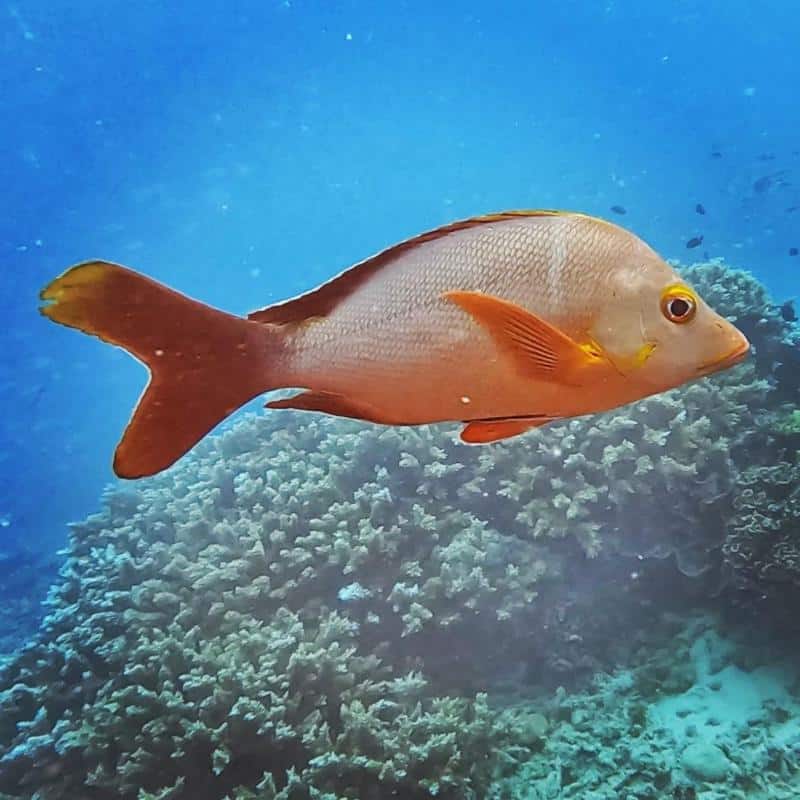
Paddletail snappers are one of the most popular types of fish with big lips, which they use to hoover up fish and crustaceans near the ocean floor. They are members of the family Lutjanidae and are a species of ray-finned fish.
The paddletail snapper is common in the Indo-Pacific where it lives in stationary schools close to coral reefs. It can reach up to 20 inches in length, so it certainly isn’t a fish you want to mess with!
They are quite pretty fish with a red to pinkish-gray body and a forked caudal fin with rounded edges. They are popular additions to public aquariums and are also sought-after game fish, though you might want to think twice about eating them as they can cause ciguatera poisoning!
13. Carp
While carp were initially native to Europe and Asia, they can be found in other places across the globe, including the United States, Australia, and Africa, where they’re actually considered an invasive species.
Carp are freshwater fish that refer to various species of the family Cyprinadae like common carp, crucian carp, and goldfish. This type of fish is very popular with anglers, especially as they put up a good battle when they are reeled in!
Species of carp are usually broad, stocky, with large mouths. They are messy fish that have seemingly unending appetites. Carp aren’t picky when it comes to food and will consume fish eggs, plants, seeds, mollusks, crustaceans, insects, and pretty much anything else they can find.
Sadly, many species of carp can severely affect local ecosystems as they have a reputation for uprooting plants. This not only affects the survivability of local plants but also animals that need those plants for food and refuge.
14. Freshwater Angelfish
Although they share a name with marine angelfish, freshwater angelfish have no resemblance or relation to the former. These fish are native to the Amazon River and come in three different species: Pterophylum leopoldi, Pterophylum altum, and Pterophylum scalare.
Angelfish have striking diamond-shaped bodies as well as large beak-like lips. They are commonly owned in freshwater aquariums due to their unique and colorful appearance.
A cool fact about freshwater angelfish is that they are monogamous and bond for life, often to the point that it can be difficult to find them a replacement mate if their former one dies. Additionally, the species can be quite territorial and aggressive towards other species of fish.
Freshwater angelfish are carnivorous, so they need a lot of protein in their diet – they can be given high-quality fish flakes or pellets, alongside live and frozen foods like brine shrimp, bloodworms, and mosquito larvae.
15. Triggerfish
Triggerfish are an interesting species of marine fish with a large spine on their dorsal fin – this spine can be propelled out like a trigger to lock other fish in place. They also have big lips and very sharp teeth!
There are a lot of species of triggerfish, all of which boast vivid colors and markings. Most species are peaceful, but there are several that can be very territorial, especially during the mating season.
Triggerfish can be found in all parts of the world in both tropical and subtropical waters – they are also a popular aquarium fish due to their stunning appearance. These fish usually feed on small invertebrates, but larger species will also eat other fish.
Read More:
Final Thoughts
There are a lot of big-lipped fish species across the globe, but, hopefully, this list helped you learn about some of the most popular ones or narrow down your options if you’re planning on owning one.
Some fish with large mouths like the common pleco use them to graze and attach to surfaces, while others like sweetlips fish use their lips to hoover up food. There are even some species that don’t seem to have a purpose for their big mouth (except for being featured in this list, of course!)
